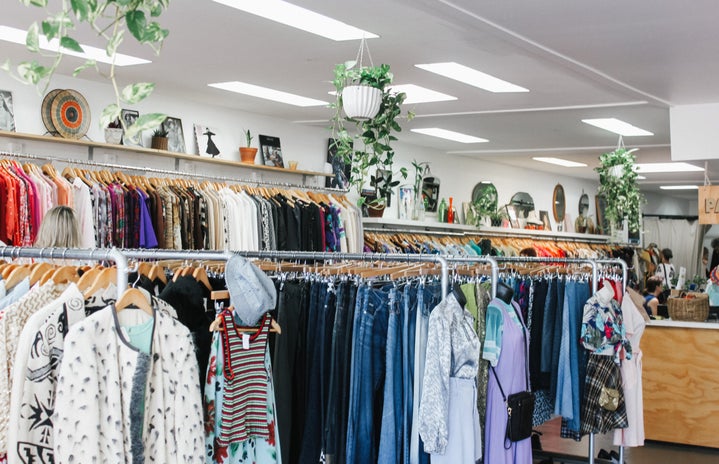There is no doubt that women in our country struggle against body image ideals. Between the media constantly promoting paper-thin waists, models ruling the runways with their thin bodies, social media influencers only posting Facetuned photos, we are left to question our own shapes and sizes. Why are we not as petite as the women we see on our screens? There are many factors that added to the endless panic over our bodies and nit-picking over every little piece of fat on them. I believe an overlooked contributor to this craze is how women’s clothing is sized in stores across the country, and how these sizes are distorting our view of the person staring back at us in the mirror.
Most often in American stores, we find women’s’ shirts on hangers labeled XS, S, M, L, XL, and maybe XXL if you are lucky. When we search through tables of folded ripped jeans, we come across sizes like 00, 0, 1, and so on until around 18. If you cannot fit into any of the sizes here, you will have to shop in the “plus-size” area or search elsewhere completely if that section is nonexistent. For some, this may not be a concern, but plenty of women who feel defeated when they have to walk to an entirely different part of the store to find their correct size. Plus size sections are even separated online! There’s a tab for Women’s, Men’s, and Plus Size. Why not put all the jeans together, no matter if they are a size 00 or a size 20? Moreover, what do these numbers even mean? It is impossible for your waist to be measured and come in at zero inches, so why are such numbers used?
This brings me to the differences in men’s and women’s clothing. Men’s pants are almost always sized by the measurement of their waist and leg length. For example, 32×30 stands for a 32-inch waist and 30-inch legs. Measurements are straightforward, most likely not varying from store to store because they are a true indicator of size. In women’s clothing, however, a medium at Forever 21 may be totally different from a medium at American Eagle. Using measurements not only makes it easier for people to shop for their correct size but relieves them of the thought of being a “small” or a “large.”
While this may not seem like such a burden to some, these short and simple words have the potential to impact us severely. I know from personal experience, as well as from stories I heard, that going up a size in any piece of clothing can make you feel like you are doing something wrong. Even when I was in middle school when I started to fit into mediums instead of smalls, I felt disgusted with myself. Of course, this was mostly just because I was growing. However, because of the society, we grow up in my 13-year-old self-viewed this growth differently. I felt “fatter” than my friends who still fit in a size small with room to spare. Our country’s culture engraves in our minds from young ages that we must fit into an extra-small to be beautiful, valued, and respected, among other things. It’s crazy how one word, “small”, can affect our mental health so much. It is not something the just the everyday woman notices, however, as authors have written upon this particular subject.
I’m currently taking a class that focuses solely on eating disorders, and in the book, we are reading (Life Without Ed), author Jenni Schaefer touches on this subject a lot. In one part, she describes that her closet, full of Calvin Klein and other name brands, was one of the many reasons she maintained such a low, unhealthy weight for so long. It was stapled into her belief system that if she could just stay an XS in her Calvin Klein underwear, then she would be thin enough. If she ever dared to go up a size, she felt like no one would like her or respect her, when in reality it would have been perfectly healthy for her to do so.
Perhaps if more stores were to instead size their merchandise by true measurements, rather than a vague “extra-small,” we would not feel so shameful when our friends wear a size small and we wear a size large. Men’s clothes are sized based on their actual measurements and the smalls, mediums, larges, and other sizes seem to be consistent in overall fit, so why not create, sell, and market women’s clothing the same way?




